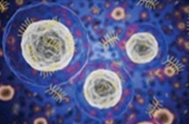Advancing cement-based materials design through data science approaches
DOI:
https://doi.org/10.21809/rilemtechlett.2021.147Keywords:
cement, pozzolan, machine learning, statistical analysis, chemical admixtureAbstract
The massive scale of concrete construction constrains the raw materials’ feedstocks that can be considered – requiring both universal abundance but also economical and energy-efficient processing. While significant improvements– from more efficient cement and concrete production to increased service life – have been realized over the past decades through traditional research paradigms, non-incremental innovations are necessary now to meet increasingly urgent needs, at a time when innovations in materials create even greater complexity. Data science is revolutionizing the rate of discovery and accelerating the rate of innovation for material systems. This review addresses machine learning and other data analytical techniques which utilize various forms of variable representation for cementitious systems. These techniques include those guided by physicochemical and cheminformatics approaches to chemical admixture design, use of materials informatics to develop process-structure-property linkages for quantifying increased service life, and change-point detection for assessing pozzolanicity in candidate supplementary cementitious materials (SCMs). These latent variables, coupled with approaches to dimensionality reduction driven both algorithmically as well as through domain knowledge, provide robust feature representation for cement-based materials and allow for more accurate models and greater generalization capability, resulting in a powerful design tool for infrastructure materials.

Downloads
Published
How to Cite
Issue
Section
License
Copyright (c) 2021 Renee Rios, Chris Childs, Scott Smith, Newell Washburn, Kimberly Kurtis

This work is licensed under a Creative Commons Attribution 4.0 International License.
Authors retain copyright of the articles published in RILEM Technical Letters and grant the journal the right of first publication with open access. The work is simultaneously licensed under Creative Commons Attribution 4.0 International License (CC BY 4.0) that allows others to share and adapt the work under the following terms: 1) a proper attribution is given in a form of a reference to the original work's authorship and initial publication in RILEM Technical Letters (bibliographic record with the DOI link); 2) a link to the license is provided; 3) the changes (if any) are indicated.









